Emiko Davies's Blog, page 14
January 16, 2017
The occasional bread baker

Just the mere mention of a horoscope and my husband will just switch off. It produces better results than him plugging your ears and singing “la la la la la”. I could be saying the most intelligent thing he’s ever heard me say but if I randomly throw in a star sign, he’s already not listening. So I tend to keep it on the down-low that in my late teens I devoured astrology books, searching for the perfect combination of planets and ascendents that would lead this Scorpio to her perfect match. I thought it might be written in the stars, as they say, and wouldn’t that be a lot easier than, you know, stumbling through love like humans do.
At some point along the way, while I was in my second or third year of college, I came across something that associated my star sign with baking. Ok, it may have not been in these exact words, but to me, at the time, it basically said, You are a natural born bread baker.

I took my horoscope’s word for it. I knew I already loved baking pastries, cookies and cakes. In high school, I baked my way through one a cookbook of American pies. I had yet to attempt to bake bread, but somehow these words — that could have even been written on a fortune cookie, or graffitied on a subway wall that I happened to walk past — gave me a sense of confidence, like how I knew I’d end up moving in with the Virgo boyfriend but that things wouldn’t work out quite so well with charming but quirky Aquarius. After all, it was in my horoscope.
Now that I’ve grown out of my astrology phase (much to the delight of my husband), I am more realistic about both matchmaking and the instincts behind baking. Truth be told I can’t even remember the first time I made my own loaf of bread, but I know one thing — that bread making never intimidated me. Somehow that silly horoscope, of all the things that could repeat itself over and over in my head, has always stuck in my mind, building up my baker’s confidence and telling me I can do it.

One day, when I had just moved to Florence as a twenty year old student, my Danish roommate, Chanette, baked a batch of soft, fragrant buns. The smell of freshly baked bread immediately filled our cold, quirky old flat with a feeling of warmth and I was thoroughly impressed. I still am most impressed — and fascinated — by good, home-baked bread. Partly I think it’s because I don’t do it enough and I haven’t practiced it regularly enough to confidently prove that horoscope right. But I do like to think of myself as the occasional bread baker. I do love to bake — I love getting my hands messy, kneading, punching and dimpling, I love the process of waiting, rising, shaping. I love witnessing the transformation of the bare ingredients to a beautiful, delicious, baked thing. And so, every now and then, I make some bread. Sometimes, it’s just to warm the kitchen a bit on an extra cold winter’s day or keep a four year old entertained for an entire afternoon (what other activity is so incredibly satisfying that it can simultaneously do these things, plus get you halfway to dinner and tomorrow’s lunch?) — like with this pane all’olio, olive oil buns.
They’re from one of my favourite cookbooks, Carol Field’s The Italian Baker.
I absolutely love baking from her book. She’s inspired me to make pantramvai, the most raisin-filled raisin bread you’ll ever find, Roman maritozzi with whipped cream, small round schiacciata (focaccia) with vegetable toppings and more elaborate projects like date and walnut panettone. Her method for making cornetti also influenced the recipe I used in my cookbook, Florentine.
Back to this bread. It’s perfect for the occasional or beginner bread baker; in fact, it’s so easy, a child can do it with you. And she might also make a stingray instead of a bun. But either way, it’s delicious. Soft and pillowy inside, but with a wonderful crust on the outside, they are wonderful on their own like a dinner roll (with a bit of a glug of olive oil over the top), or slice them in half and use them to make panini, filled with a favourite cheese or some prosciutto perhaps. They’re perfect for using for these smoked tuna and artichoke panini.
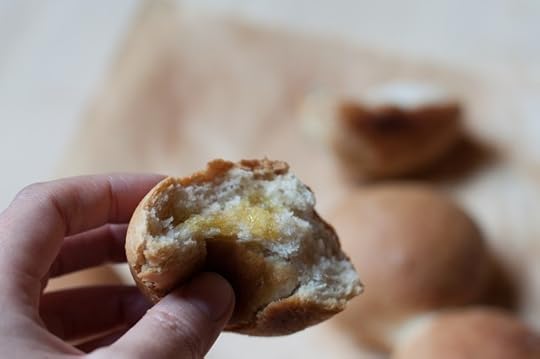
Pane all’olio
Olive oil buns
Makes about a dozen rolls
This is Carol Field’s recipe from The Italian Baker. It’s originally in US cups, I have it here in grams. The original calls for lard, which I love to use in bread making as it gives a great crunch to the crust and adds flavour, but you can use butter or substitute with olive oil. You can also easily halve this to make just one ring of 6-7 rolls, but know that these rolls can also be frozen once baked and cooled completely (so you may as well make the whole recipe). One thing I urge you try: seek out a really, really nice flour. Like, splurge. Think of it like a special Sunday roast — you may go to the butcher and get a really nice cut of meat seeing as it’s the main ingredient. Do the same here. Get a nice flour, don’t make this with just regular white flour — try to find something stone-ground, something unbleached, try it even with different grains like spelt flour.
18 grams of fresh yeast (or 1 sachet, 7 grams, of active dried yeast)
300 ml of lukewarm water
50 ml olive oil, plus more for brushing
15 grams lard, softened (or butter or olive oil)
500 grams unbleached flour, plus more for dusting
10 grams salt
sea salt for sprinkling on top
I always make bread by hand, otherwise you miss out on half the fun.
Crumble the yeast (or sprinkle, if using dry yeast) into a large bowl with the water and let it dissolve. Stir through the olive oil, the lard (or butter), the flour and salt, and once combined, transfer the dough to a floured surface and begin to knead until smooth and elastic — 8-10 minutes should do it.
Lightly oil the bowl where the dough was mixed and place the ball of dough in the bowl. Cover the top of the bowl with plastic wrap. If you want to bake this later, leave the dough to rise slowly in the fridge for 8-12 hours. Otherwise, leave the bowl in a warmish corner of the kitchen (like inside the oven with the pilot light on) and let rise until doubled, about 1 1/2-2 hours and you should have a very silky, lovely dough.
Divide the dough into about 12 equal pieces and roll into balls. Arrange the balls in 2 rings on 2 separate baking trays lined with baking paper, leaving about 3-3.5cm between each ball. Cover with a tea towel and let rise in a warmish spot until doubled, about 1-1/2 hours.
Heat oven to 200C.
Brush the tops of the dough with plenty of olive oil and sprinkle some sea salt over the tops. Bake for about 30-35 minutes or until a caramel-coloured crust forms.
January 9, 2017
A winter’s day in San Gimignano
It’s a blustery, drizzly, foggy winter’s day. A day that might normally send you straight back to bed to take refuge under the covers, a cup of tea and a pile of good books close by. But we’ve got a lunch date. In San Gimignano. So, fuelled with coffee, we hop on a train from Florence to Poggibonsi where we meet my good friend, Sarah, a San Gimignano local. She runs her family farm, Poggio Alloro, 10 minutes drive from San Gimignano in its glorious, rolling countryside. And now that it’s the middle of winter, and all is quiet across San Gimignano, she wants to show us her town.
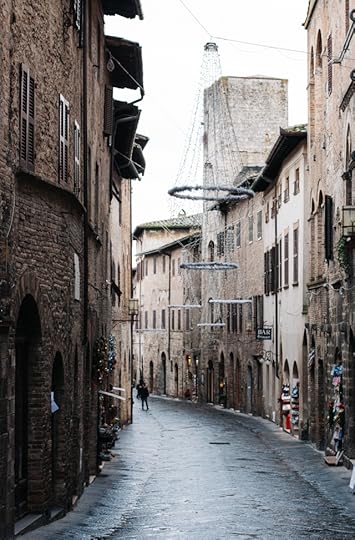

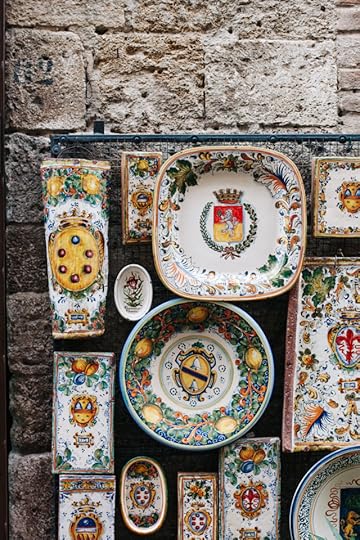
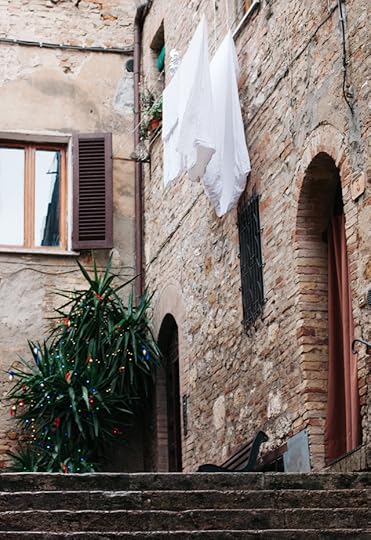
San Gimignano is a place that suffers from its success and popularity. For about nine months of the year, the UNESCO World Heritage site swarms with tourists who come to see this remarkably preserved hilltop town and its 14 towers, rising out of the walled city like a “medieval Manhattan”. Often in the unbearable, scorching heat of the afternoon summer sun, they wander the main street up to the 14th century piazza in search of gelato and shade, past many tacky shops and the torture museum. Within an hour, they’ve left, back on their way to Siena or Florence. In the meantime, more coaches pull up and more tourists stream in. It’s rather like a Disneyland.
Visiting renowned tourist sites that are entire cities — places like San Gimignano and Venice, oh, and Florence – in the off-season (on a random weekday, especially) is, one of the few chances to really have them “to yourself” (the other is at night). It’s a rare opportunity to see the place quietly, slowly, without crowds but with bushels of atmosphere, made all the more moody and beautiful by the fog, the rain and the cold. Alone, meandering over the damp, shimmering, medieval stones, you don’t have to go far to imagine stepping back in time by a thousand years. And there’s nothing quite as comforting and satisfying as warming up over bowls of soup and glasses of wine for a few hours in a cosy restaurant.
Try doing this in the summer and you’ll find that it’s simply too hot and crowded. Too hot to walk up to the piazza, okay maybe only if you can get a gelato (but there’ll be a queue a mile long). Too hot to drink wine — you’ll want to wait until 8pm when the sun’s rays are less fierce. Too hot to sit in a restaurant and eat hearty Tuscan food. Try this with overheated cranky children (or partners!) and you’ll wish you simply were at the pool instead.
But in the winter it’s a whole different story. The paved streets, shiny and damp from the rain, are empty. The mood is peaceful, the locals more relaxed, relieved, even. We start our winter visit with mugs of coffee, pastries and toast. We are quite literally on our own. The next several hours are spent slowly wandering in the drizzle, admiring the panoramic views (smudged with a touch of fog) from the edge of the city walls, peeking into ancient courtyards (someone left a door open) and taking in the medieval architecture, without another soul around. Tummies start rumbling, hands are getting cold and we head to Sarah’s favourite restaurant and warm up with delicious, comforting bowls of soup, homemade bread and plenty of wine.
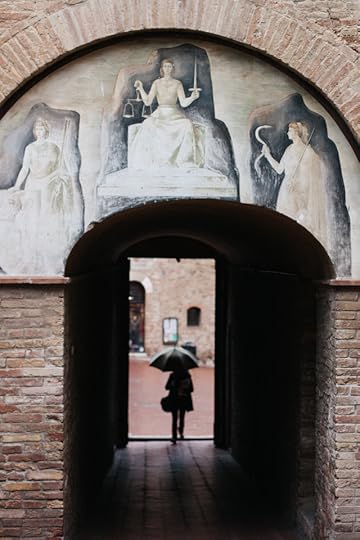

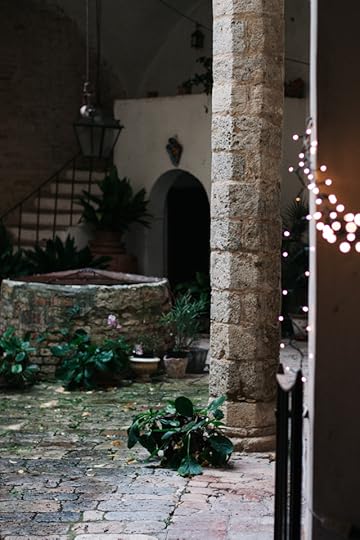
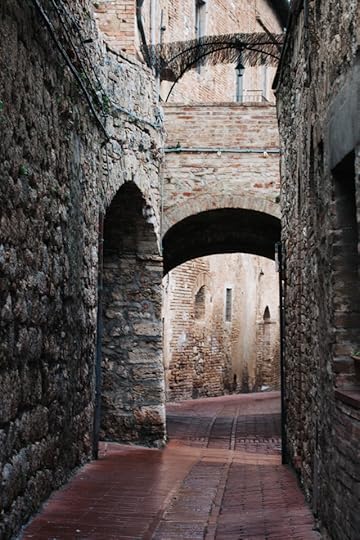
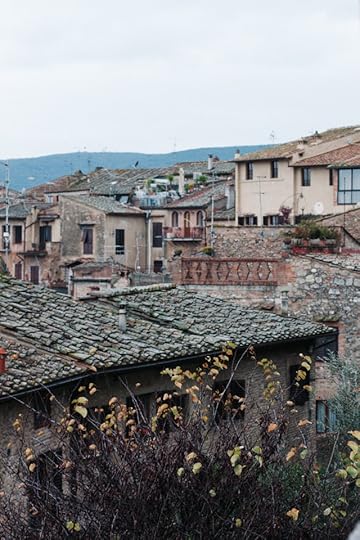
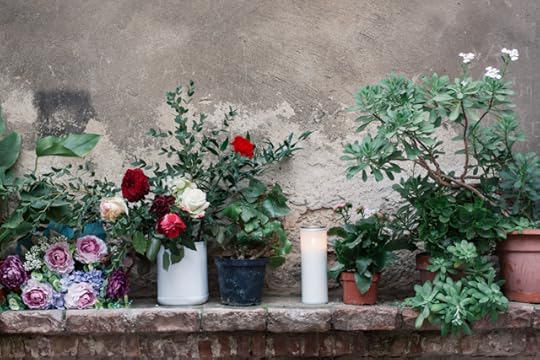

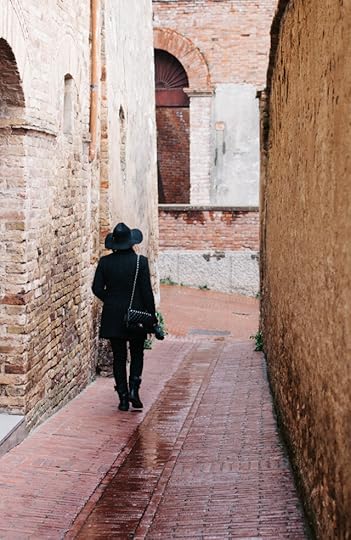
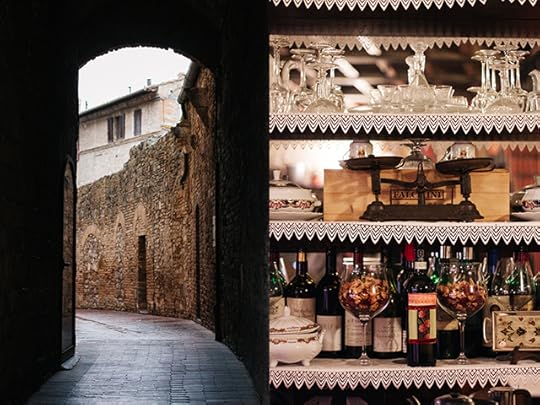
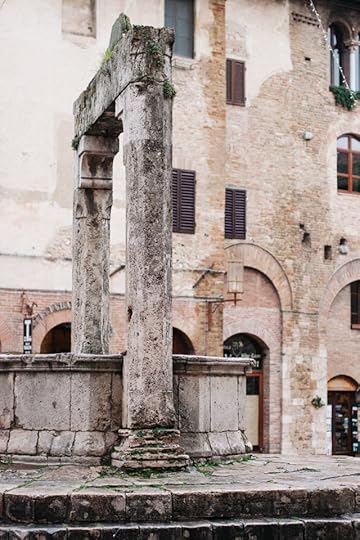


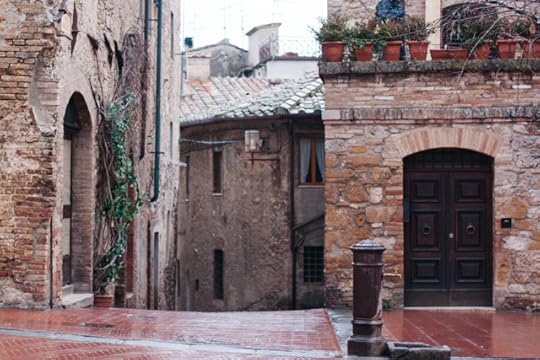
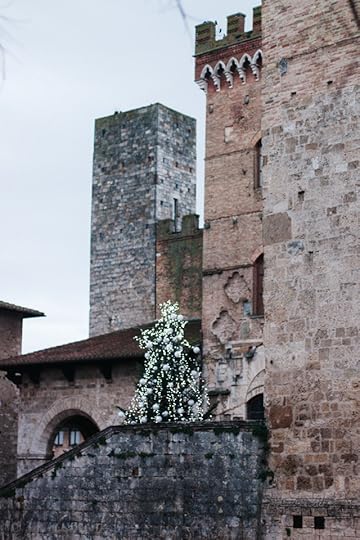
San Gimignano Address Book
Caffe Giardino, Viale Roma, 17. A sweet little cafe just outside the walls of San Gimignano, a few steps from Porta San Giovanni (the town’s main entrance). They make wonderful panini with their house-baked schiacciata and offer huge mugs of cappuccino, just the thing for warming hands for an early morning winter visit to the town. I particularly love the bruschetta, grilled toast with melted gorgonzola and jammy fresh persimmons.
Galleria Continua, Via del Castello, 11. A stunning contemporary art gallery hidden behind in an old theatre, just off Piazza della Cisterna. See their website for the list of current exhibitions and the impressive list of international artists that they represent. Note that they close for an hour over lunch.
Osteria del Carcere, Via del Castello, 13. A wonderful restaurant that focuses on Tuscan specialties. You won’t find pasta or pizza here, but you will find an array of flavourful, rustic, seasonal Tuscan soups like zuppa di porcini e fagioli (porcini mushrooms and beans), zuppa di cipolle (onion soup) and minestra frantoiana (a vegetable soup). It’ll be hard to choose just one, so you can also order 2 or 3 soups in small portions. There are terrines (they come from the famous Cecchini butcher), roasts and more. Don’t miss out on a cheese platter either, each cheese is full of character and comes from a nearby farm. They’re accompanied by honey and house-made jams. The bread and the biscuits served with coffee are house-made too. Extensive wine list (they claim to have the best wines in Tuscany).
Duomo, Piazza del Duomo, 2. Also known as The Collegiate Church of Santa Maria Assunta, this is a beauty of a church. Its mesmerising interior is entirely frescoed with the cycles of the Old Testament and the New Testament, and featuring the work of masters like Domenico Ghirlandaio, Benozzo Gozzoli, Lippo Memmi (Simone Martini’s brother in law), Bartolo di Fredi, Taddeo di Bartolo, it is not to be missed.
Rocca di Montestafoli, Via della Rocca. Just keep walking up, past the duomo, and keep going up hill. You’ll end up at the Rocca, the highest point of town, where you can admire the olive tree garden and the surrounding countryside and look at the towers at what feels like eye-level (photo below).
Gelateria Dondoli, Piazza della Cisterna, 4. The only place to get gelato in San Gimignano. It’s world-famous and for a reason. It’s delicious, they use natural, seasonal ingredients, and a unique combination of flavours for some untraditional variety. My favourites are the blackberry and lavender sorbet and the creamy gelato dedicated to San Gimignano’s patron saint, Santa Fina, made with San Gimignano’s infamous saffron and pine nuts.
Fattoria Poggio Alloro, Via Sant’Andrea 23. When you need a place to sleep or you want to get out to a farm for dinner, Sarah’s family farm is just a 10 minute drive past some of the prettiest views in all of Tuscany. On a Saturday night, their Chianina farm is my favourite place to enjoy bistecca alla fiorentina (the photographs in that post were taken there), sitting in the old farmhouse by a roaring open fire.
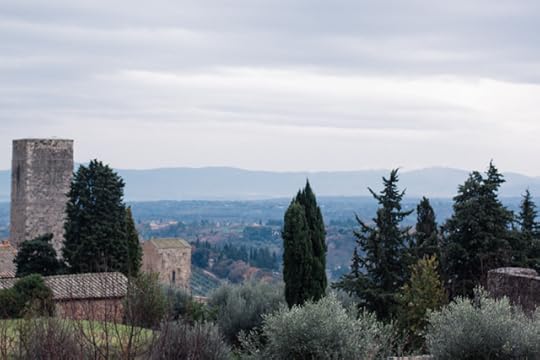
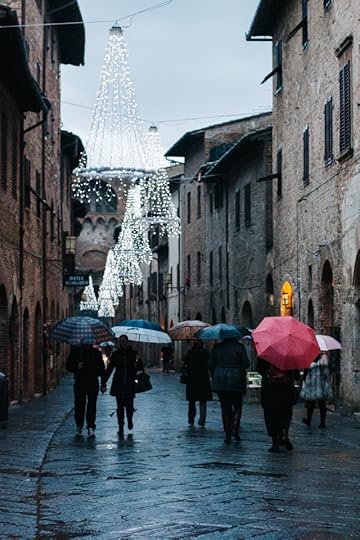
Want to see more reasons to travel to Italy in the off-season? See my posts (warning, photo heavy!) on:
Venice
Autumn in the Val d’Orcia
Sicily in November (Part 1 and Part 2)
Also check out my friend Georgette’s, aka Girl in Florence, take on our wintry day out here.
January 2, 2017
A menu for a new year + wild boar with chocolate sauce
It may not be new — the inspiration from this menu comes from Pellegrino Artusi’s nineteenth century cookbook — but it certainly is a nice way to start a new year.

I’ve written about Artusi’s menus before, but in the very early stages of this blog (which has just turned 6 years old!). They have always charmed me and fascinated me, as an insight into what might be on tables in the late 1800s. Unsurprisingly, the menus are not so different to what you see on Tuscan family tables today, especially for special occasions like Christmas and New Year’s where family traditions rule.
As Artusi himself points out, at the end of his 790 recipes, is that the reader might find it difficult to choose what recipes to prepare. He offers 2 menus, one for each month of the year, plus 10 special occasion menus (Christmas Eve, Easter, an so on), to help inspire the reader.
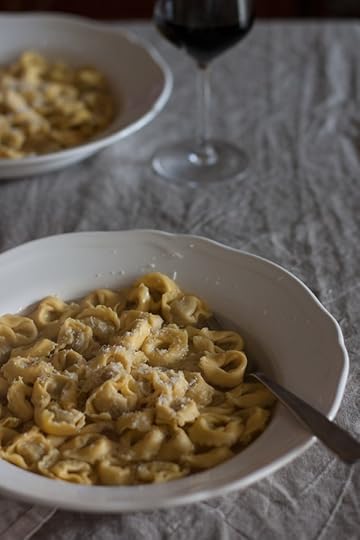
For New Year’s Day, he suggests cappelleti in brodo (hat-shaped filled pasta related to tortellini, which he also suggests for Christmas, along with crostini di fegatini and panforte, a classic Tuscan menu), cotolette (deep fried veal chops), bull roasted over coals, roast duck and a hazelnut cake.
Amongst his pair of menus for the month of December, he recommends plum pudding (yes, an English recipe, his book is peppered with them) and risotto with wedge clams. For dessert, he likes to suggest fresh, seasonal fruit — pears, apples, mandarins — and dried fruit, which is very traditional at Christmas time, namely dates and nuts. I liked the idea of “slices of orange, made more gracious with some icing sugar and Alkermes,” a most delicious, refreshing way to end a meal. Without Alkermes, you could use a splash of vin santo or cointreau.
In January’s menus, you can find the mandatory tortellini alla bolognese (his recipe makes 300 tortellini, with a filling of prosciutto, mortadella, bone marrow and parmesan) and boiled cappone (castrated rooster), sweetbread croquettes, cinghiale in dolce-forte (wild boar in chocolate sauce) or it’s version with hare and ‘rosbiffe‘, roast beef. For dessert — bianco mangiare, a wobbly, subtle Sicilian almond milk pudding.
Taking these seasonal suggestions on board, we had for our New Year’s Day lunch one that Artusi himself would hopefully have been excited about:
Tortellini in brodo
Cinghiale in dolce-forte
Roast duck breast with stewed lentils
Bianco mangiare (almond pudding)
Orange slices sprinkled with Alkermes
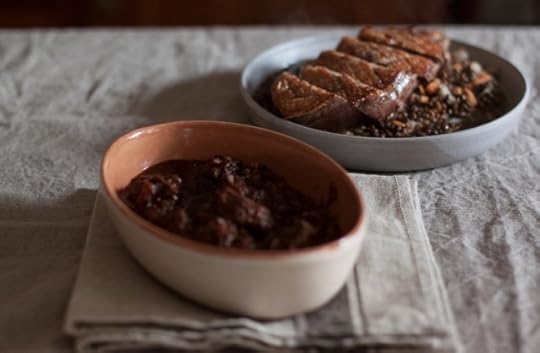

Cinghiale in Dolce-Forte
Wild Boar in Chocolate Sauce
The recipe for Cinghiale in Dolce-Forte is one of my absolute favourites for its complex and incredible flavour, rich, silky texture and obvious sweet and sour Renaissance influence. This recipe is also a sneak preview from my new book, Acquacotta, which will be published by Hardie Grant Books 1 March, 2017.
Inspired by Artusi’s recipe, it begins with a very simple stew, where the wild boar simmers, softening for a couple of hours. Just before serving, the “dolce-forte” sauce is added to the pot, completely transforming it: a mixture of sultanas, pine nuts, candied fruit peel, sugar, vinegar and the darkest chocolate you can find. It’s an excellent way to prepare any game — hare and venison can be cooked this way too.
Serve this with something starchy: mashed potatoes, soft polenta or a nice crusty loaf of Tuscan bread to mop up the sauce. Because this thick and silky stew has such a rich flavour, you could halve this recipe to easily serve four smaller portions, especially if you plan on eating it as a main that follows several other dishes (like in this menu). If it’s the only dish, make the whole thing – and in any case, remember that the leftovers of cinghiale in dolce-forte, are possibly even better than the original dish.
Serves 4
1 kilogram of wild boar
1 onion, finely chopped
1 medium sized carrot, finely chopped
½ celery stick, finely chopped
3 tablespoons extra virgin olive oil
2-3 bay leaves
½ tablespoon flour
250 ml red wine
1 litre beef stock (or water)
40 grams of sultanas (raisins)
30 grams of pine nuts
30 grams of candied fruit peel (orange or citron)
40 grams of sugar
40 grams of dark chocolate (80% cocoa)
60-80 ml of red wine vinegar
If it’s not already cut into pieces, chop the wild boar into chunks roughly 4×4 cm.
In a casserole pot, cook the onion, carrot and celery in the olive oil until the vegetables are softened but not coloured, about 10 minutes over low-medium heat. Add the meat to the vegetables, season with salt and pepper, and let it colour on all sides evenly, a further 10 minutes.
Add the flour and toss through the mixture. Let cook 2 minutes then add the red wine, turn heat up to medium-high and let it reduce until the sauce begins to look thickened, about 10-15 minutes. Add stock (or water) to cover and bring the stew to a boil. Turn heat to minimum and let simmer, uncovered, until the meat is tender, about 2 hours, but depending on the meat it could take up to 3. Check occasionally, and top up with water as needed.
In the meantime, prepare the “dolce-forte” sauce. Place the sultanas, pine nuts, candied peel, sugar, chocolate and 60 ml of red wine vinegar in a small saucepan and heat over medium heat until the chocolate is melted and the mixture well-combined. Remove from heat and set aside (it is good to do this at least an hour before you need it).
When the meat is tender, turn heat up to medium to reduce the sauce until it is thick (if it isn’t already). Add the dolce-forte sauce and let the stew come back to the boil. Remove from the heat and serve.
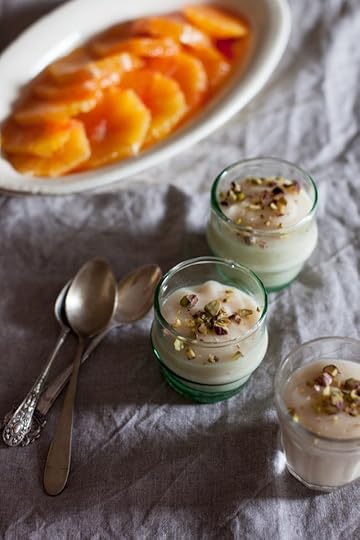
December 29, 2016
Introducing Acquacotta
For the past 18 months I’ve been planning, writing, photographing and making another cookbook, my second, and I’ve got in my hands right now at the first advance copy of Acquacotta, published by Hardie Grant. It’s out worldwide on 1 March 2017, and I’ll be in Australia and the UK in March promoting the book (see my events page for updated information on where and what will be happening from cooking classes to author talks) but I’m so excited about it that I wanted to share a bit about it now!
There’s a peek in video form and some behind the scenes photographs from the shooting of the recipe photographs, which we did over a scorching hot week of June in my most favourite B&B in Maremma, Il Baciarino, with my amazing extended team from Florentine (who all flew over from Australia!), with a few new, wonderful additions.

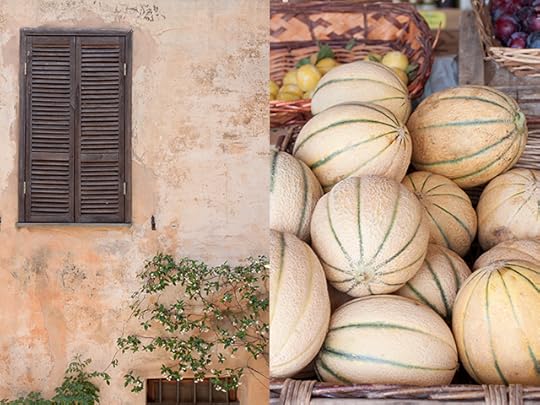
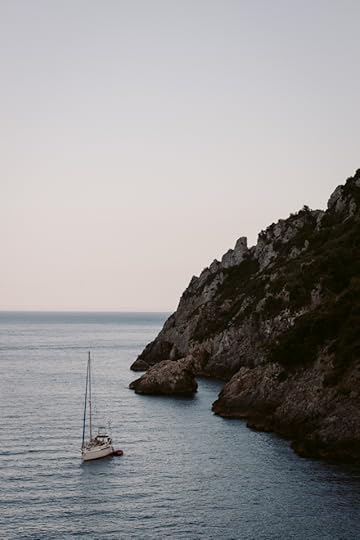
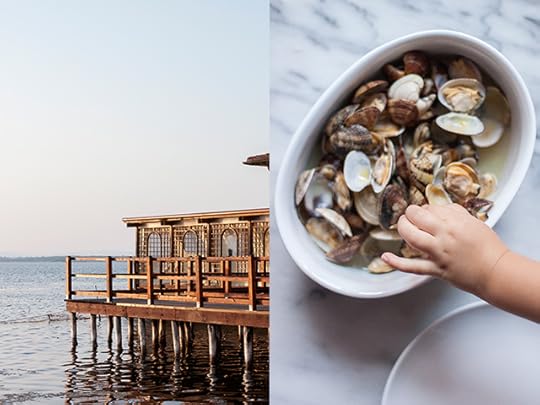
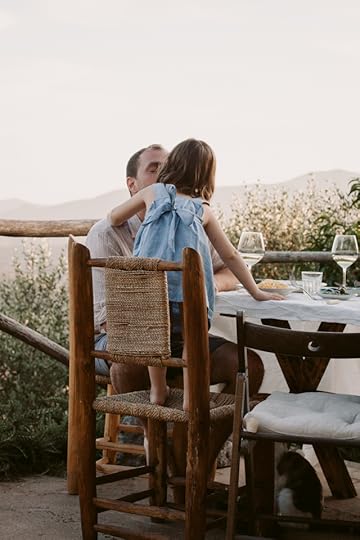
The cookbook itself is entirely inspired by the six months I spent with my husband Marco (who was head sommelier at Il Pellicano at the time) and our daughter over the warm months of 2016 living in Maremma, in Porto Ercole on Monte Argentario, a promontory in southern Tuscany. The beauty of this part of Tuscany — such a little known, wild, even, part of Tuscany — is so incredible, I wanted to try to tell its story through food traditions.
It wasn’t easy. When we first moved to Porto Ercole, a small fishing village that expands in the summer to include holidaymakers, mostly Roman (Rome is only a 90 minute drive away; Florence is nearly 3 hours away), I went to the newsagent on the main street in town and asked if there was a book on local cuisine. The shopkeeper went over to a shelf and pulled down a book called “Cucina Italiana“. I had to stifle a laugh. Um, no. I mean something on cucina maremmana, I corrected myself. Maremman cuisine. I’d discovered that what few books are around are usually found in tiny kiosks and newsagents of the local towns, so I collected a few — some would best be described as pamphlets.
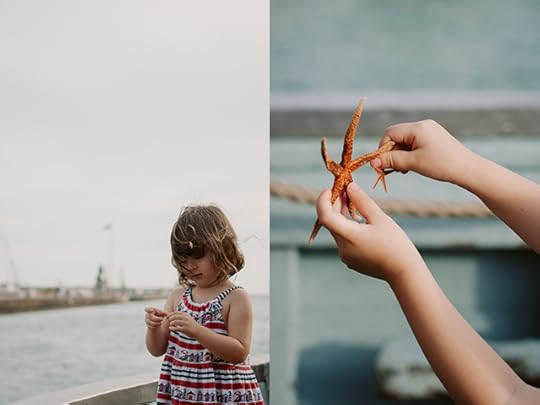
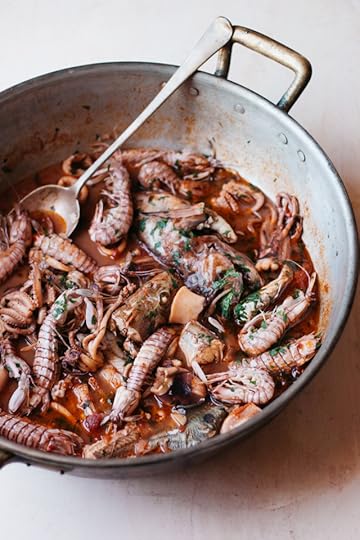
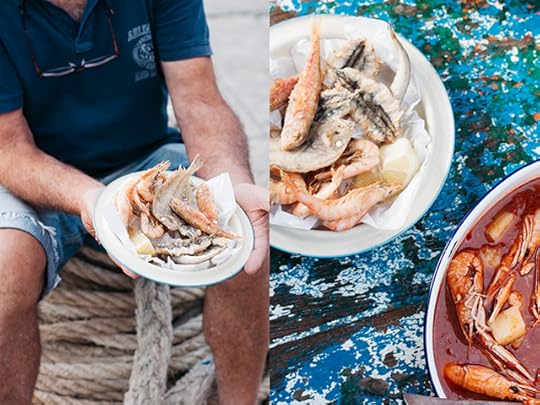
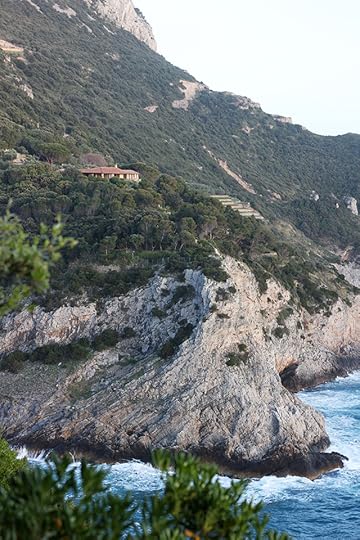
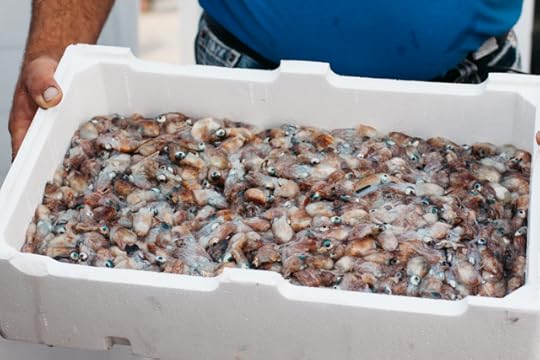

Recipes and old traditions are disappearing, so I managed to find recipes by talking to locals, finding out some of their favourite family recipes. Eating out at restaurants in Argentario, where we lived, means a seaside menu guided by what Italians love to eat while at the seaside, not necessarily local specialties, but a visit to a sagra or two each month made up for that. Maremma does love a good sagra, and not only are specific dishes celebrated but you can find a lot of other classic, homestyle dishes at a sagra, so they became the perfect recipe-hunting ground.
Like Florentine, Acquacotta has 80 recipes. I photographed the location shots, many in film. I even did some little illustrations for this one. The entire book is inspired by this little corner of Tuscany — the southernmost one, on the coast. A little corner of Maremma that goes from Monte Argentario, Orbetello and Giglio Island down to Capalbio, on the border of Lazio, across to Pitigliano (an hour inland), then up to the hot springs of Saturnia (an hour on a twisty, windy road through beautiful pastures) and back. This corner encompasses the seaside, an island, a lagoon, mountains, hilltop towns, farms, fields, forests and hot springs. The food that comes from here is unlike your typical Tuscan fare — there is a lot less red meat for starters (in fact there are no beef recipes in here, but you will find plenty of seafood and a bit of game). It’s incredibly diverse, incredibly tasty, but also rustic, thrifty and in many cases, you can find recipes that happen to be vegan or gluten free. I’ll share a recipe very soon!
In the meantime, here is a peek of the making of Acquacotta.
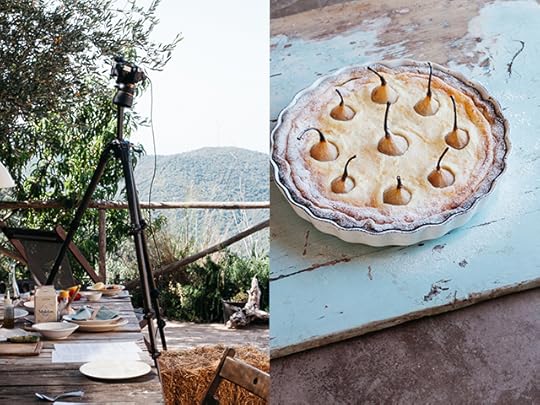
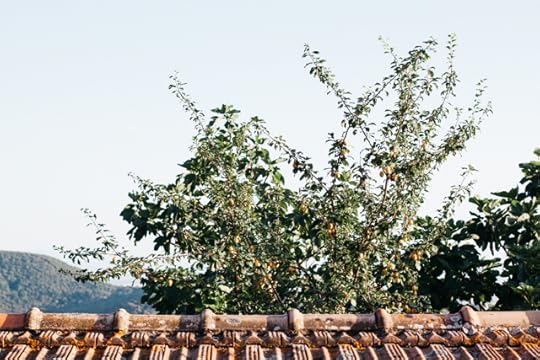
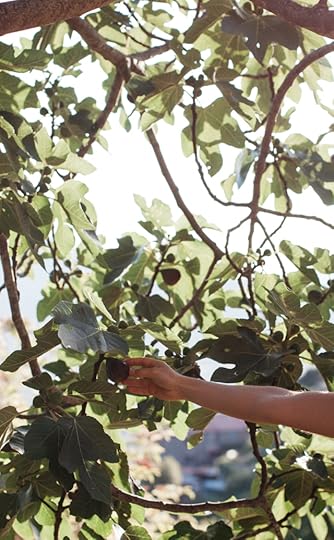
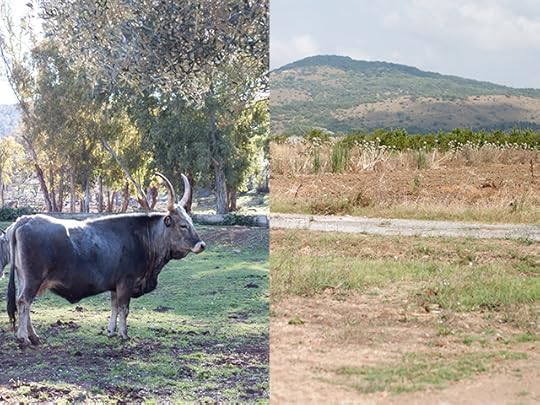
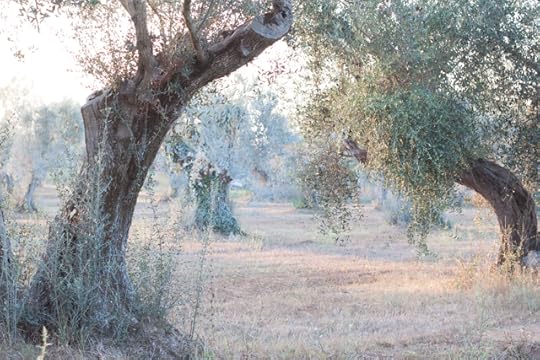
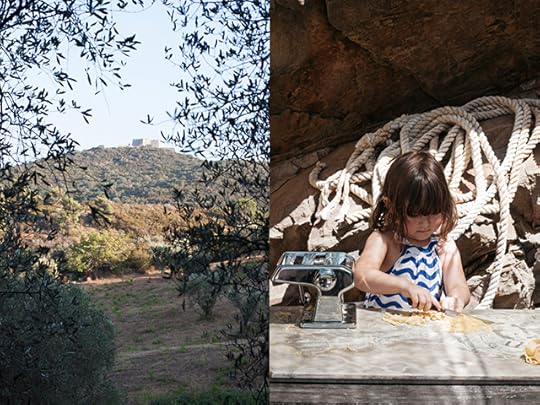
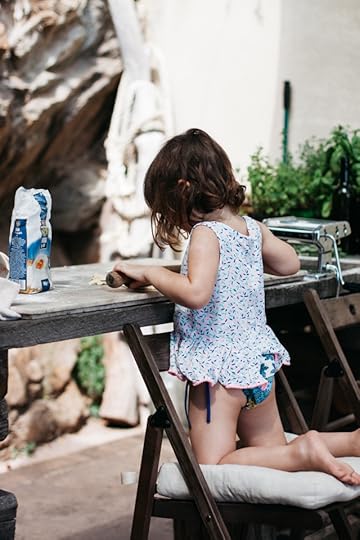
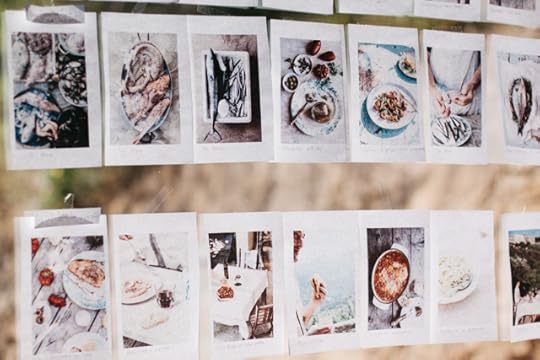
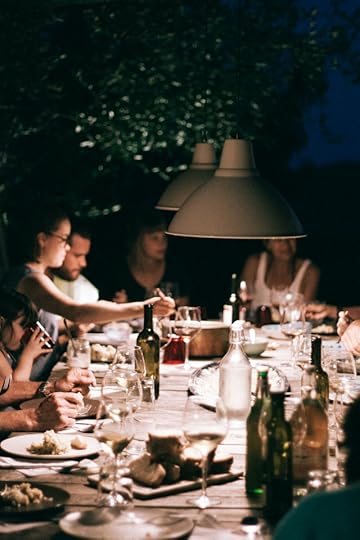
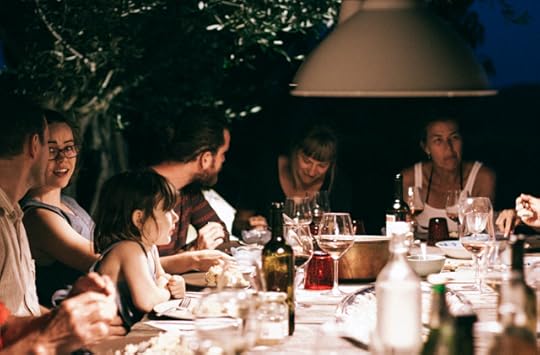
The credits…
Special thanks to the many people who helped behind the scenes, but especially to the wonderful team who helped make the recipe photographs happen and who we shared these wonderful dinners with well into the night after all the work was over: Alice Kiandra Adams, Lauren Bamford, Deb Kaloper, Kathy Kaloper, Helen Johnson, Emily Weaving.
Thank you to Andrea and Clelia for sharing their kitchen with us that week and having the most beautiful B&B, Il Baciarino, in Maremma. Not only did we all enjoy staying there but we photographed all the food in the gorgeous space that they have created. Andrea even took us down to his family’s fishing boat at Castiglione della Pescaia, where we watched the fresh fish come in, shot some photographs directly on the deck of the fishing boat and even had his father pose with a plate of fritto misto! Thank you for being the backdrop of Acquacotta.
Some other wonderful people and places around Maremma featured in the cookbook: Il Pellicano Hotel, a stunning resort in Porto Ercole and the reason why we were in Maremma in the first place. Fabrizio d’Ascenzi and his family’s vineyard and hotel, Villa Acquaviva, in Manciano, who helped me master ciaffagnoni. The dreamy farmhouse, Antica Fattoria La Parrina, near Orbetello, where it was always a pleasure to shop for fresh produce, pat their donkeys, eat their cheese and drink their wine. Francesco Carfagna of Altura Winery and his family on Giglio Island, one of the most wonderful places I have ever visited. Katja Meier, Maremma expat, who directed me to her favourite spots when I first moved to the area. My friends Alessandra and Umberto from Porto Ercole, who love mushrooms, and lovely Elisa from my local fish shop, Da Ledo, for always giving me extra anchovies.
The beautiful design of the book was done by award-winning designer Allison Colpoys, who also designed Florentine.
Thank you, finally, to my publisher Jane, at Hardie Grant, for helping me mould the idea I had into something tangible, and to my editors Andrea and Susie, who helped refine, shape and whittle down the enormous manuscript.
And of course, to my husband and my daughter (who is now four but was two when I started this book!), who both helped cook for the final recipe shots of the cookbook and are featured here and there in a number of the location shots I took (I couldn’t help it). I want to thank them most of all, for letting me make this cookbook, for letting me devote the time and energy to writing, cooking, making recipes, traveling, testing, photographing, and for coming along for the entire journey.
I cannot wait to share these “Recipes and Stories from Tuscany’s Secret Silver Coast” with you all.
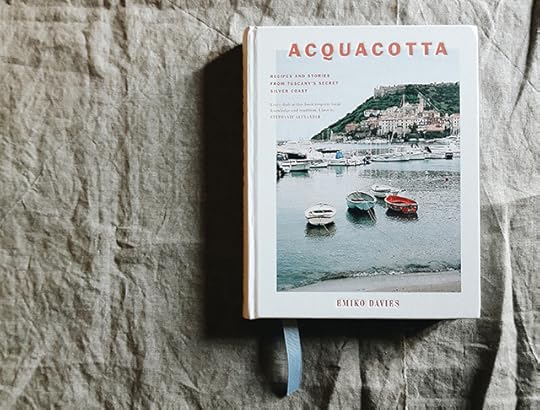
December 13, 2016
The Venice List
There is nothing like Venice covered in fog. The cold, damp air and the threat (or excitement, at least for me) of the water-filled streets of acqua alta. It all makes for a good excuse to escape the cold damp air by popping into a warm bar for a hot chocolate (possibly rum-spiked or topped with whipped cream) or an ombre, a little glass of wine, only to emerge shortly after with flushed cheeks, ready to head to the next bar. It’s why Venice should really be visited in the cold months — so you can savour it cloaked in its mysterious beauty and in the quiet season, without the hordes, without the heat.
At the end of October I had a wonderful couple of days revisiting Venice in my favourite season with Skye, Luisa, Annie and Valeria (and this is her stunning Venice food guide). We wandered, we chatted over spritzes and then later, hot chocolates, we wandered some more, finding rosy palazzo exteriors to gush over and reflections on the water to photograph. We had a delicious seafood dinner in the Ghetto at 40 Ladroni, which was finished off with a sgroppino (a sort of slushy cocktail of lemon sorbet and vodka). All over a damp, foggy couple of days. And it reminded me of how much I love Venice when it’s moody.
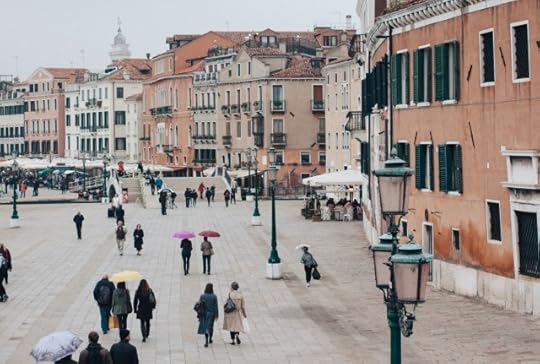
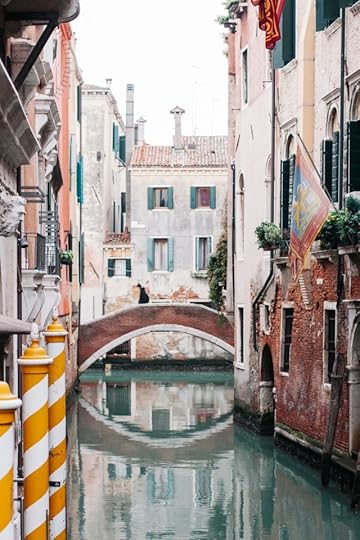
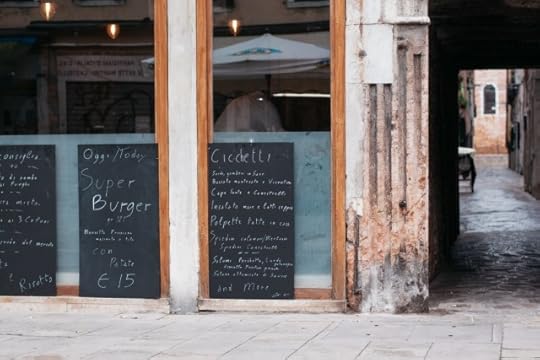


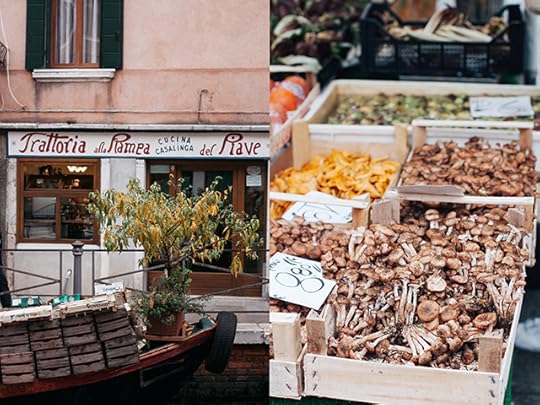
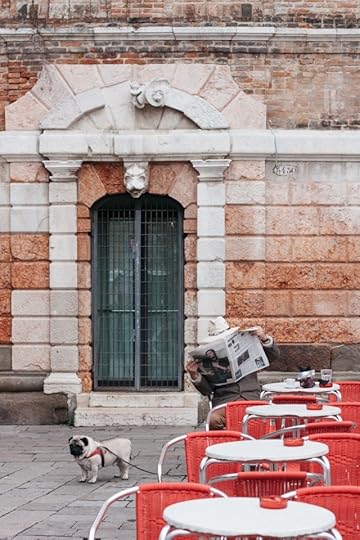
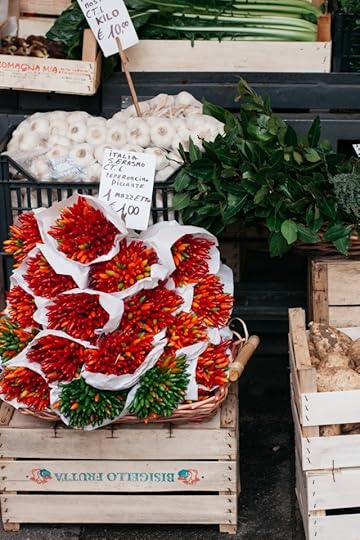
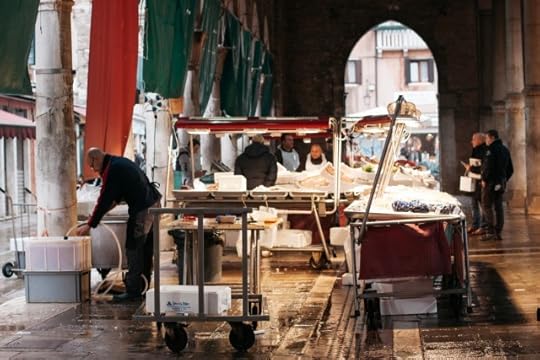
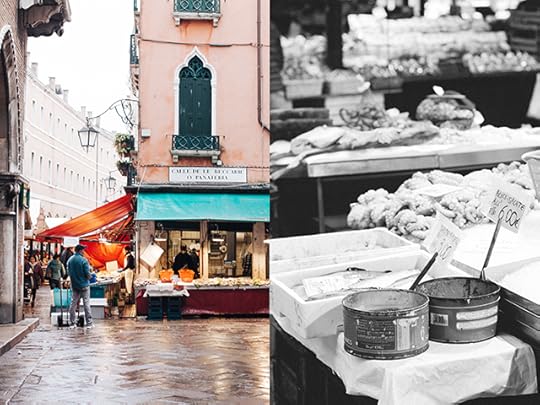
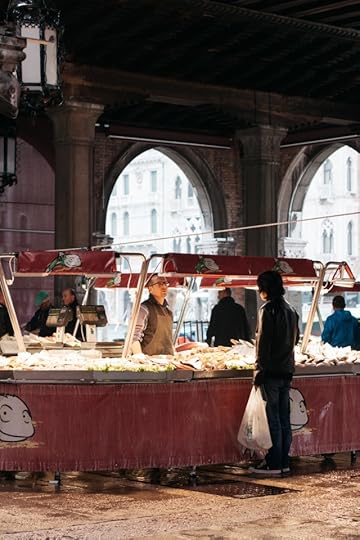
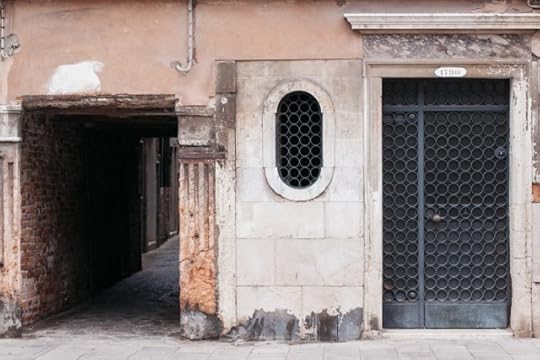
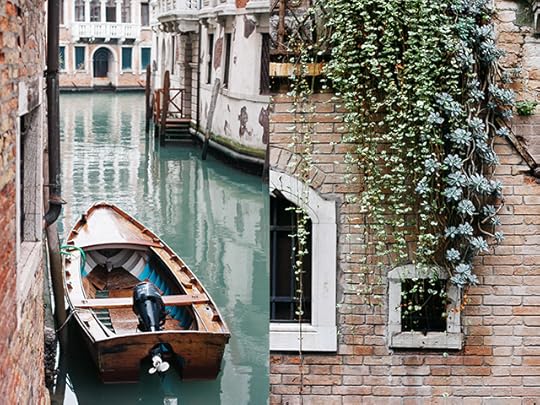
The Venice List
My favourite things (in the style of the ones I’ve done on Turin and Sicily), that can be counted on two hands, that I’ve loved after many, many visits to Venice (two extended ones, while I was working on restoring artworks on the Monastery on the Island of San Lazzaro, before I started food writing). They’re the things I’d tell my friends to do and see on their first visit and the things I like to go back to every time I visit.
The Rialto Market — a visit to this historic outdoor, partially covered market on the Grand Canal will have you wishing you had a reason to cook up some fresh artichoke bottoms and deep-fry some moeche, soft-shelled crabs (and if you have a kitchen, why not?). The fresh fish market is as fascinating as a visit to any museum, if you ask me. Also a good spot for a bite to eat (see next point).
Classic bacari (Venetian bars) like All’Arco and Do Mori (the most ancient, it dates to the 1400s) are to be found near the Rialto Market, so stop by and get a cicchetto of some baccala mantecato (whipped cod) or a couple of polpette di tonno (tuna balls) with a little glass of wine. (See this post for more recommendations).
Polpette at La Vedova — Worth waiting for them, even when there is a line and it’s so cold outside you can barely feel your hands. You’ll be fine as soon as you hold one of these piping hot, deep fried, crumbed meat balls between your fingers. Trattoria Ca’ D’Oro alla Vedova.
Acqua Alta Bookshop / Libreria Acqua Alta — where else can you find a gondola inside a bookshop filled with books? Or a staircase made of old encyclopaedias? This unique, picturesque bookshop.
Campo Santa Margherita — whether it’s for a stroll, a spritz, a supermarket, or to let your child kick around a soccer ball, this is your piazza. It’s untouristy, even in the height of summer, and the relaxed, local vibe will soon have you reaching for another round of spritzes.
The Peggy Guggenheim Musem — If I have time to visit a museum, this is my favourite. Once Peggy Guggenheim’s home, today you can stroll around the beautiful (unfinished) palazzo and its pretty garden and admire her collection of 20th century art and the view from the windows. Think Picasso and Pollock on the Grand Canal.
A walk on the Zattere — this long esplanade along the lower belly of Venice’s fish (haven’t you noticed when you look at a map of Venice it looks like a fish?) faces the island of Giudecca. It’s made for a passeggiata, or a long walk. Along it, you can also find Gelateria Nico, which is a good place for a gelato or the specialty below, and both Campo Santa Margherita and the Peggy Guggenheim Museum are not far away either, depending on where you start the walk.
Il Gianduiotto — So gelato might not be the first thing on your mind in the cool weather, but these are hard to resist and in terms of flavours, it suits autumn just fine — the Gianduiotto is a block of gianduia (chocolate hazelnut) ice cream drowning in whipped cream. It’s an old-school specialty of Gelateria Nico and it’s a good thing it’s located on the Zattere, so you can take a long, long walk after eating one of these!
Pasticceria Tonolo — My friend Rosa first took me here while she was living in Venice and I kept making to make a trip there every visit after. A small, narrow pastry shop in Dorsoduro on the corner of two tiny Venetian laneways, it’s a great stop for just a coffee (standing) and a pastry (the savoury pastries like puff pastry filled with artichoke cream are particularly delicious), or pick up a whole cake or a tray of little bigne to share with friends.
You’ll find a few other travel guides I’ve written on Venice here on my blog. This one is about bar-hopping your way through Venice for delightful cicchetti. And this is another general guide to favourite spots that happen to work particularly well if you happen to have a little one in tow.
You might also like Valentina’s guide for wandering Venice in winter.
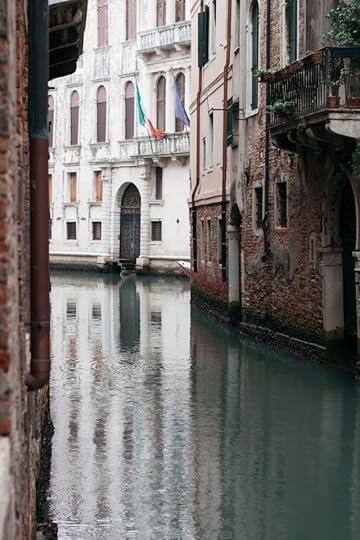
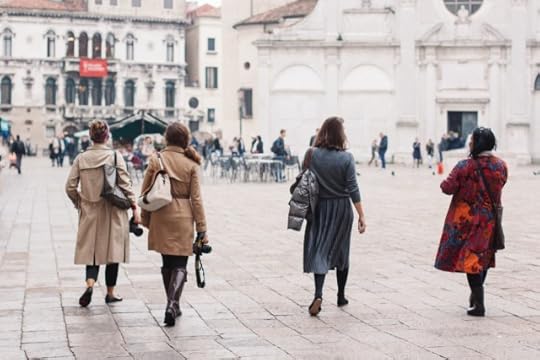
November 30, 2016
Strawberry tree jam (Marmellata di corbezzoli)
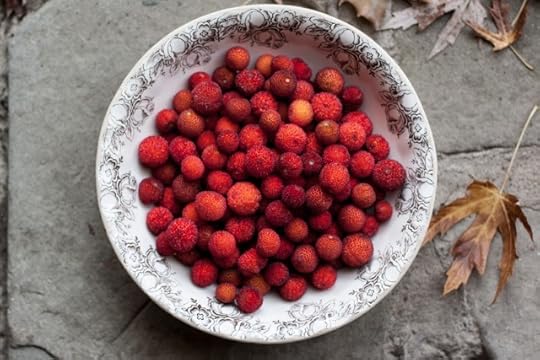
I didn’t notice it at first, the skinny tree with dark leaves in our shared garden at our new home in Settignano, in the hills above Florence. I was too taken by the green vines hanging like a curtain over our entrance, keeping the house cool in the humid Florentine summer. But now that it’s autumn and the the leaves still left on the vines have turned a shade of rose champagne, that skinny green tree is sporting bright vermillion fruit, like fuzzy cherries or red christmas balls. A gust of wind easily blows them to the ground, where they squash like over ripe persimmons.
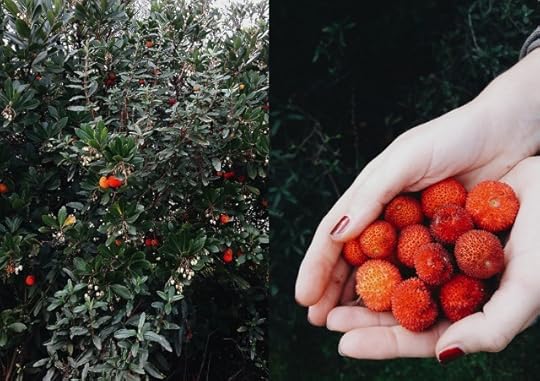
Corbezzoli, in Italian, are called Irish Strawberry trees in English. The whole plant is useful in the kitchen, from the leaves, which can be dried and taken as tea (used, apparently, as an anti-inflammatory). The wood is prized for the stove, as cooking over corbezzolo wood can lend good flavour to whatever you’re grilling. The berries are an interesting fruit that are used in jam and liqueurs and taste of something wild and ancient. Soft and mellow, with a flavour that’s hard to put my finger on — a little like jujubes, which, like corbezzoli, grow all over Tuscany too.
Cooked into jam, the flavour and colour is remarkably reminiscent of quince. And, like quince jam, it’s wonderful on its own but really shines when served with cheese. I first tasted it this way when visiting my friend Simona Quirini in her beautiful garden at her family’s restaurant, Canto del Maggio — they have a proper kitchen garden complete with vegetables, fig trees, olive trees, wild herbs like myrtle, calamint and fennel and a hedge of strawberry trees, bursting with fruit.
Her jam was divine — the colour of caramel, ever so slightly grainy, as Simona likes to leave the seeds for texture, not too sweet and quince-like. She served it with a nutty pecorino cheese and I could have eaten just that all day long. She kindly sent me home not only with the recipe, but with two kilograms of corbezzoli, which we delicately pulled off the trees.
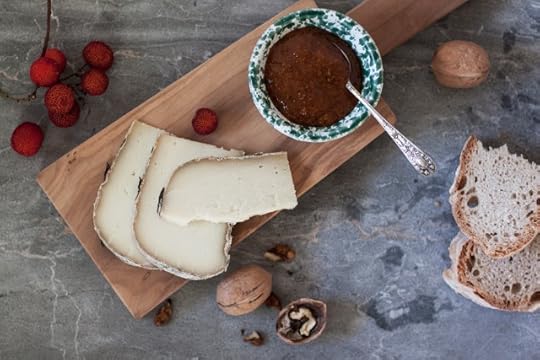
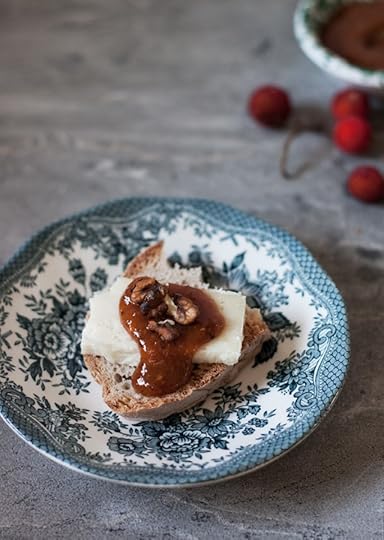
Simona’s strawberry tree jam
Marmellata di Corbezzolo di Simona
For every kilo of corbezzoli, you need 500 grams of raw sugar.
If you like, some lemon zest can go in here too. Rinse the corbezzoli well then put them in a large pot and cook them over medium heat until they are so soft that they begin to turn into a puree, when stirred, about 15 minutes. Stir, so that they don’t stick. [If you want a smoother jam, you can pass the cooked, soft fruit through a sieve or food mill at this point].
Add the sugar and the lemon zest, if using, then cook again, turning up the heat slightly until it bubbles and turns glossy. This fruit is high in pectin so it will set quite quickly. Use the saucer test to check regularly — a tiny blob of jam on a frozen saucer should quickly tell you the jam is ready when it looks set and the surface ‘wrinkles’ when poked.
Place in sterilised jars (filled to 1.5 cm from the top) and seal the jars by boiling them in a wide saucepan for 10 minutes. Let cool completely before storing.
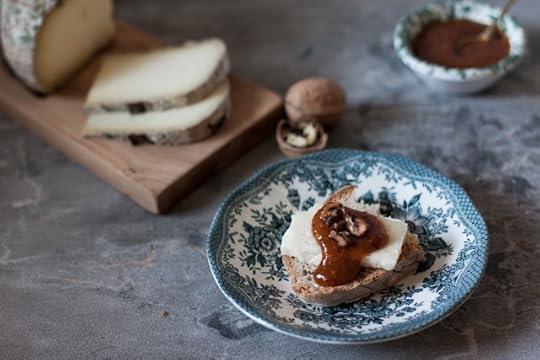
November 4, 2016
Saffron and ricotta frosting for a birthday cake
It seems like a long way to go about getting some fresh saffron to frost a birthday cake with, but it was worth it. I’ve been plotting for months with my friend, Sarah Fioroni, to let me get involved with the saffron harvest at her family’s farm in San Gimignano.
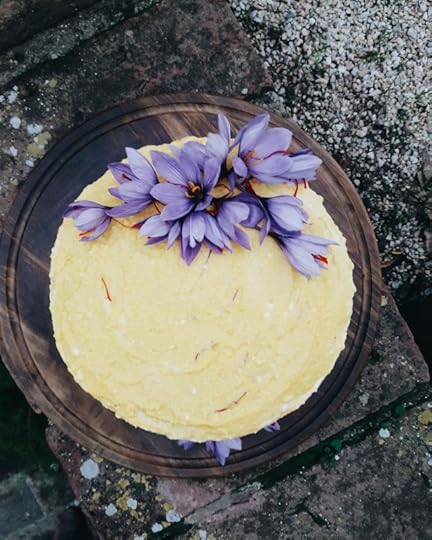
It’s not the first time I’ve celebrated my birthday with a saffron theme on the farm at Fattoria Poggio Alloro — there was this pumpkin and saffron risotto too. It’s rather a nice thing to have your birthday coincide with the precious and short season for harvesting saffron from crocus flowers.
Saffron, one of the world’s most expensive spices, has been grown in these parts for nearly 1000 years (records in the town archives show how saffron was just as prized then as it is now and was used even as a form of currency in San Gimignano in 1228) but only recently did it get prestigious ‘DOP’ (protected designation of origin) status.
It struck me as strange that for something that has been cultivated in these parts for so long had very little culinary traditions, but then I realised saffron wasn’t used for food in the Middle Ages. It was a colour. It tinted textiles a bright, beautiful gold. It was ground into pigments for paint. The closest it came to food was its use in liqueurs (digestivi) and tonics and as a medicine to treat inflammation, teething in babies, cuts and burns and other ailments.
In Italian food traditions, saffron is best known for risotto alla milanese, a simple dish of saffron, rice and Parmesan cheese. Named for Milan, it seems to have little to do with Tuscan cuisine, until I read a sweet little anecdote from the Middle Ages (quite possibly made up by the locals but sweet nonetheless). According to the legend, there was a Milanese painter who worked in San Gimignano. A lover of the bright golden yellow produced by the saffron, he used it so much to the point where a Florentine painter joked to him, “Why don’t you put this yellow into your risotto too!” And to challenge him, he did.
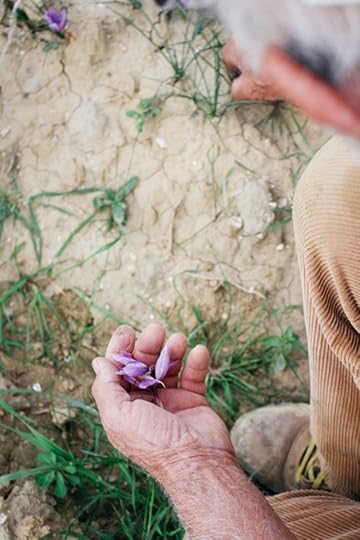
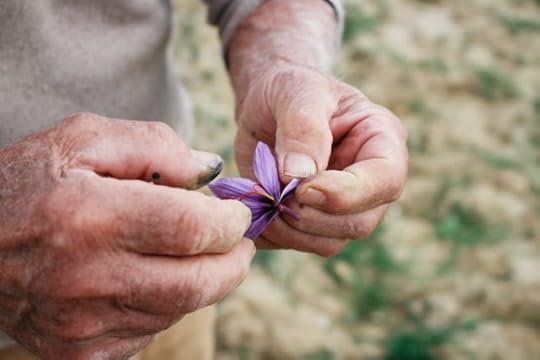
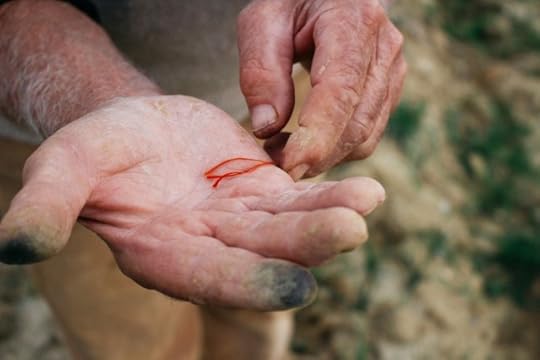
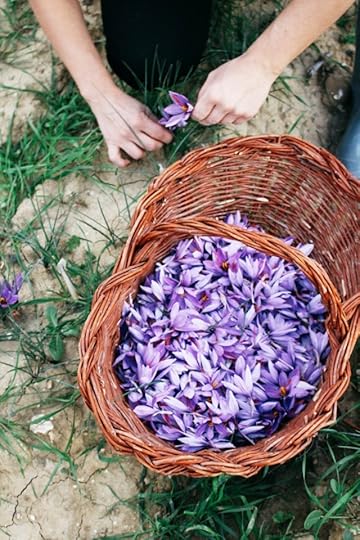
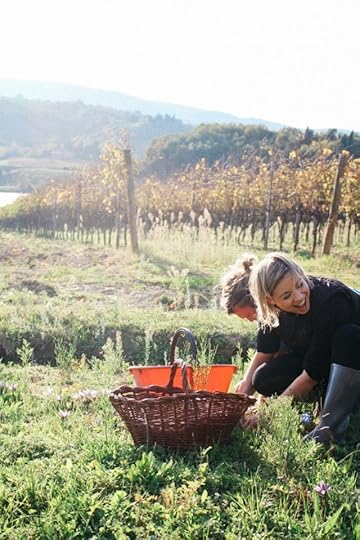
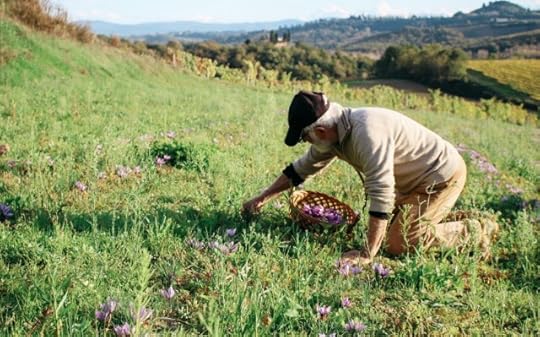
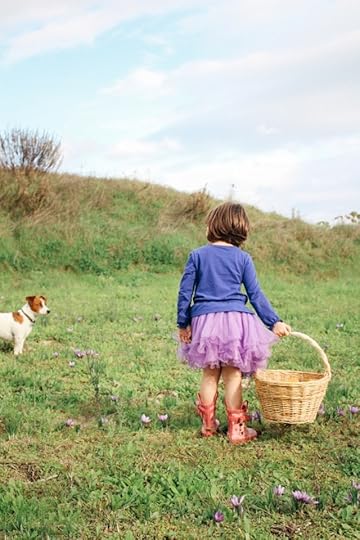
San Gimignano’s saffron, which obtained its DOP status in 2005, is made under a certain set of rules. It must be organic. The flowers and the stigmas, or threads, must be harvested by hand, then dried and sold whole – this guarantees that the product is genuine. Saffron powders are notorious for being cut with other products (I’ve heard of things from ground turmeric and paprika to crushed red bricks being added to the powder), so are best avoided.
After finally experiencing the saffron harvest with my own eyes and hands, I completely understand why there is a certain cost for this most precious spice. You need about 200 of these pretty, purple crocus (crocus sativus) flowers, each with 3 scarlet red stigmas (the saffron itself), to produce just 1 gram of fresh saffron. The saffron then has to be completely dry to be sold and used (when fresh, like many herbs, spices or even tea, it is not as intense in flavour or colour), so you actually need about double the amount for 1 gram of dry saffron. Which means 350-400 flowers for 1 gram of saffron. All hand picked. Just a pinch of saffron strands – roughly 0.1 grams – is enough to make risotto for 4, or as it has it, to colour about 500 grams of ricotta frosting.
We set off for the fields to pick purple flowers on bent knees, fighting with bumble bees, who get drunk on their pollen and heady scent – the crocus is a member of the Iris family, a basket full of these flowers is simply intoxicating. Traditionally this is done first thing in the morning, while the flowers are still closed to protect them from the night air – it makes for more efficient picking – but we spent a good afternoon here, under an unusually warm autumn sun, retreating only when the last rays fell behind the towers of San Gimignano, then it was off to the dining room’s long table to start the process of picking the threads out of each flower.
Full baskets were tipped out and flowers filled the middle of the long table. The fireplace crackled, wine was poured, and we got to work, chatting, and meditatively pulling out threads from each flower, one by one. Slowly more friends joined us, until we had a full, long table of people pulling out threads and adding them to little, soft piles of vermillion strands, until it was dinner time, when we feasted on my favourite pumpkin and saffron risotto, bistecca and roast vegetables, all from the farm.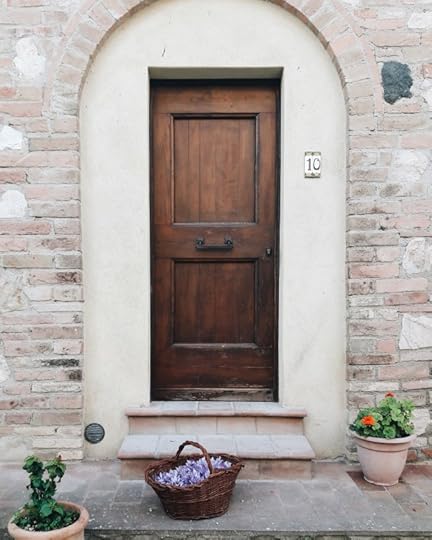
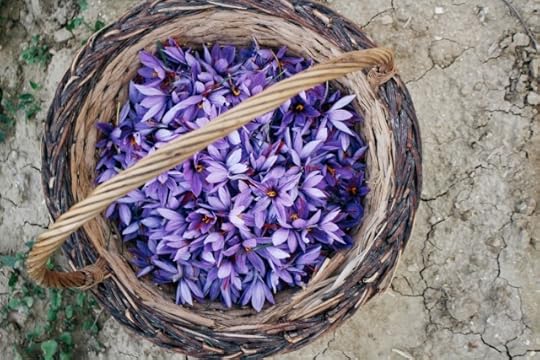
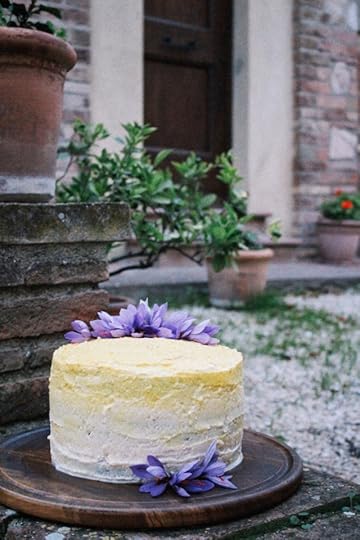
Since it was my birthday, I decided to bring a triple-layer birthday cake that celebrated the harvest and made this cake, a chocolate and olive oil cake, with a frosting of saffron and ricotta. I used the same recipe you can find on this earlier blog post, but added a pinch of saffron diluted first in a shot glass of boiling water, to half of the frosting. Let the liquid, along with the threads, sit in the frosting for as long as you can to draw out as much colour as you can (the day before, for example) before using. I used the saffron-toned frosting on the top half only, the normal frosting in between layers and on the bottom and then blended the tones together with a spatula.
Fattoria Poggio Alloro
Via Sant’Andrea 23
San Gimignano SI Italy
Disclaimer: This is not a sponsored post, just one written full of love for a place that is very special and close to my heart! I became such good friends with the Fioroni family because of frequenting the farm so often and helping photograph Sarah Fioroni’s farm cookbook, Recipes From a Tuscan Farm. You’ll see if you visit. It’s hard not to fall in love! I mean look at this view.
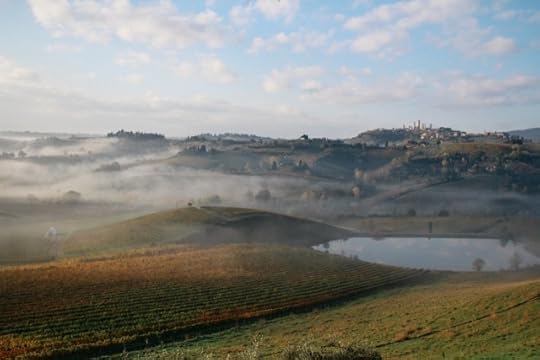
Emiko Davies's Blog
- Emiko Davies's profile
- 13 followers



